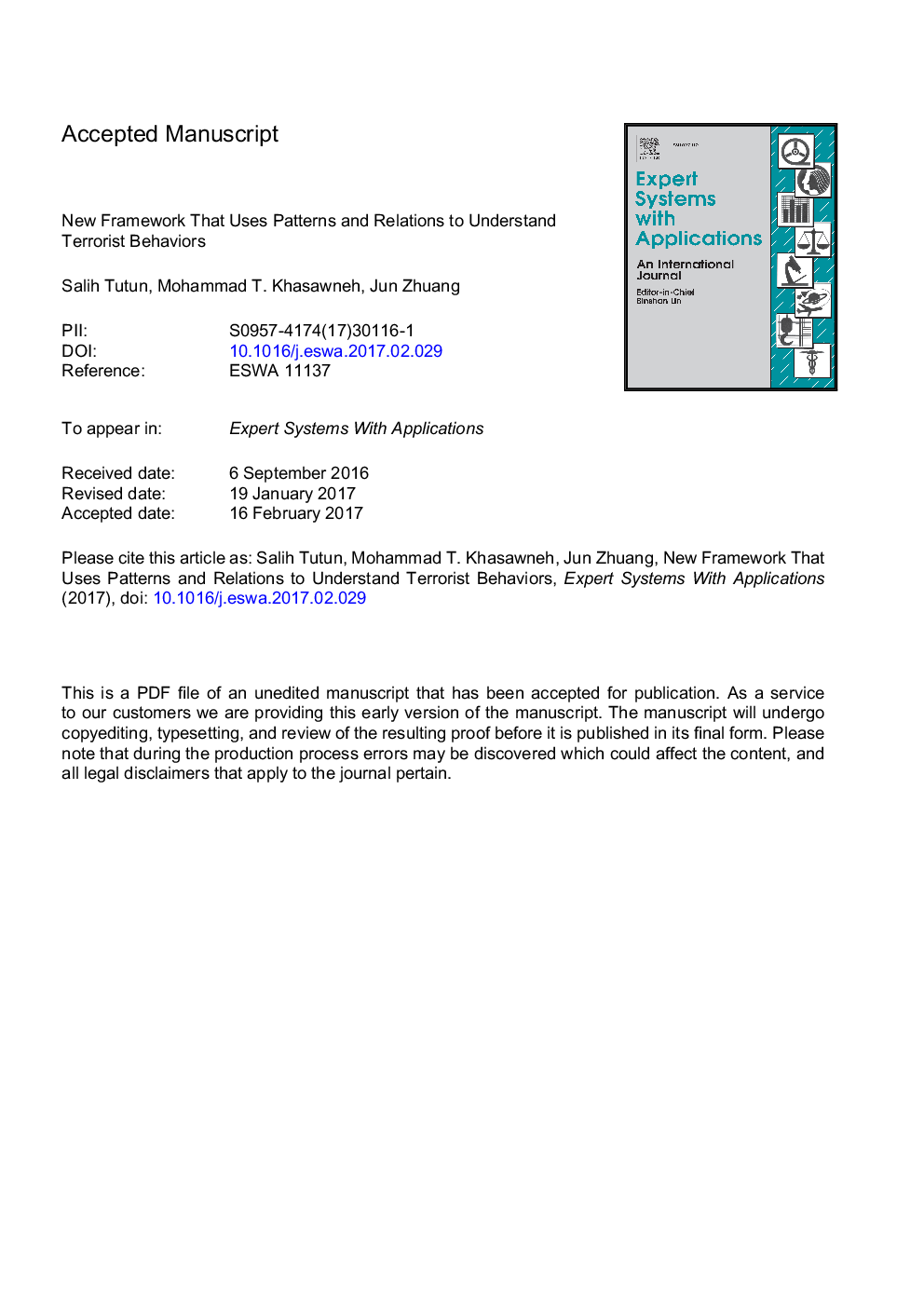ترجمه فارسی عنوان مقاله
چارچوب جدیدی که از الگوهای و روابط برای درک رفتارهای تروریستی استفاده می کند
عنوان انگلیسی
New framework that uses patterns and relations to understand terrorist behaviors
| کد مقاله | سال انتشار | تعداد صفحات مقاله انگلیسی |
|---|---|---|
| 132034 | 2017 | 58 صفحه PDF |
منبع

Publisher : Elsevier - Science Direct (الزویر - ساینس دایرکت)
Journal : Expert Systems with Applications, Volume 78, 15 July 2017, Pages 358-375
ترجمه کلمات کلیدی
تشکیل پیوند، انتخاب ویژگی، بهینه سازی سازگاری، شبکه های، تصمیم سازی، امنیت مادری،
کلمات کلیدی انگلیسی
Link formation; Feature selection; Adaptive optimization; Networks; Decision making; Homeland security;

